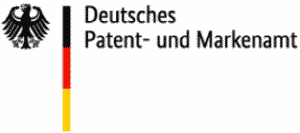Why should you attend my live, in-person PCT seminar in January? Continue reading “Why you should attend my live, in-person PCT seminar in January”
Four more days to get a discounted seminar registration
Additional opportunity to learn about PCT declarations
It will be recalled that there was a webinar yesterday (November 26) about Making best use of PCT Declarations in your PCT application. Unfortunately there were some technical problems at various points during the webinar. I will thus be reprising the webinar on Tuesday, December 10. For more information, or to register, visit https://blog.oppedahl.com/pct-webinars/ .
German patent office has joined DAS!!

Regular readers of this blog are well aware that I almost never use two exclamation points in a headline. Today, however, is a day for such emphasis. Yes, the German patent office has joined the DAS system as a Depositing Office. Continue reading “German patent office has joined DAS!!”
Join the over 450 people who are registered for this free PCT webinar
In about seven hours I will be presenting a free-of-charge webinar entitled Making best use of PCT Declarations in your PCT application. As of right now, about 462 people have registered for this webinar. This subject matter is of potential interest to any PCT enthusiast anywhere in the world. Attendees come from every continent except Antarctica.
To learn more, or to register, visit the WIPO web site here.
Tuesday: free-of-charge webinar about PCT Declarations
This Tuesday, attend a free-of-charge webinar about best practices for use of PCT Declarations. This webinar will be of interest to PCT enthusiasts everywhere in the world, not only in the US.
To register, click here.
Attend a 2½-day live in-person Patent Cooperation Treaty seminar in scenic Colorado
Attend a 2½-day live in-person Patent Cooperation Treaty seminar in scenic Colorado, near the Denver airport. Maybe also attend an optional half-day program specifically directed to docketing of the PCT. Tuesday, January 7 to Thursday, January 9, 2025.
-
-
- Get $100 off the 2½-day class if you book by Wednesday, December 4 – coupon code BL0602A
- Get $40 off the half-day course if you book by Wednesday, December 4 – coupon code BL0602B
- Get $140 off both courses if you book by Wednesday, December 4 – coupon code BL0602C
-
For more information, or to register, click here.
Seven upcoming Patent Cooperation Treaty webinars
Here are seven upcoming Patent Cooperation Treaty webinars: https://blog.oppedahl.com/pct-webinars/ .
Are you in the DC area?
Are you in the DC area? Do you use the Patent Cooperation Treaty? Have you not already signed up for the PCT Seminar that will take place this next Monday in Alexandria, Virginia? If so, then cancel your plans for Monday and sign up for the PCT Seminar that will take place this next Monday in Alexandria, Virginia!
This is the best PCT seminar money can buy. Except that it is free of charge. The presenters include experts from WIPO. I will also be among the presenters.
To learn more, and to register click here.
Uruguay has joined the PCT
 I am delighted to be able to report that Uruguay has deposited with the IB of WIPO its instrument of accession to the Patent Cooperation Treaty. Continue reading “Uruguay has joined the PCT”
I am delighted to be able to report that Uruguay has deposited with the IB of WIPO its instrument of accession to the Patent Cooperation Treaty. Continue reading “Uruguay has joined the PCT”
